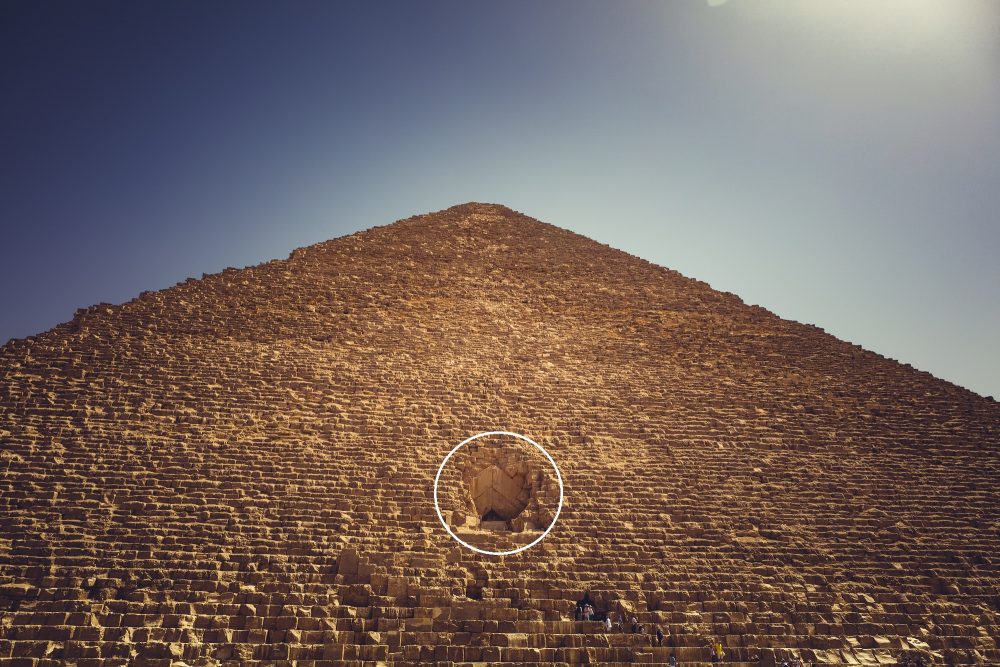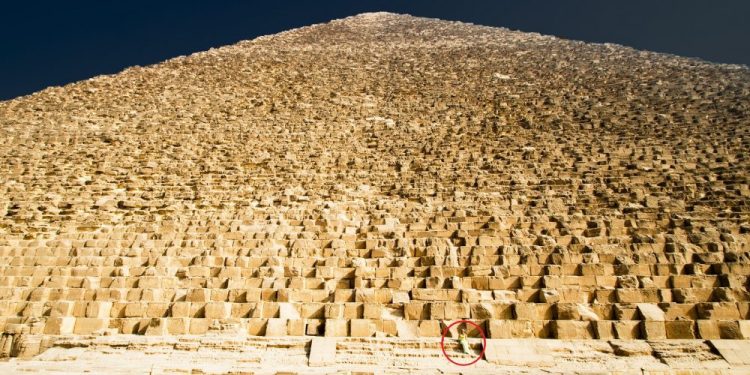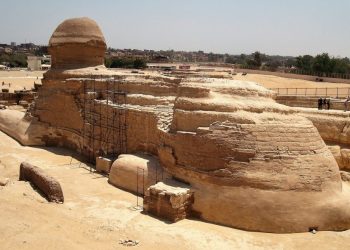The size of the Great Pyramid of Giza is one of the most misunderstood aspects of this ancient wonder. While countless photos and videos show it from a distance, very few capture just how truly massive it is when experienced up close. This article explores the pyramid’s mind-bending dimensions, the scale of its construction, and the unimaginable effort required to build it more than 4,500 years ago.
A monument that dwarfs modern expectations

When people think of the Great Pyramid, many imagine a large stone monument—but the reality is far more staggering. The size of the Great Pyramid of Giza defies casual understanding. Built as a royal tomb for Pharaoh Khufu around 2600 BCE, it remains the only surviving structure of the Seven Wonders of the Ancient World. And it’s not just standing—it’s towering.
Constructed from an estimated 2.3 million stone blocks, most weighing between 2 and 3 tons, the total mass of the Great Pyramid is estimated at about 5.9 million tons. Some of the granite blocks used in the King’s Chamber weigh up to 80 tons and were transported from Aswan, located over 800 kilometers (500 miles) away. How these stones were moved and lifted with Bronze Age tools remains one of archaeology’s biggest puzzles.
The numbers behind the monument
To fully grasp the size of the Great Pyramid of Giza, it helps to break it down:
-
Original height: Approximately 146.6 meters (481 feet)
-
Current height: 138.8 meters (455.4 feet), due to erosion and the loss of the outer casing stones and pyramidion
-
Base length: Each side of the base originally measured 230.4 meters (755.9 feet)
-
Volume: Estimated at 2,583,283 cubic meters
-
Total stones used: Around 2.3 million
-
Construction time: Roughly 20 years, based on archaeological estimates
-
Stones installed per day: About 800 tons
-
Stones placed per hour (around the clock): More than 12
Standing at the base, the true size becomes clear—not only in height, but in sheer weight and volume. And that doesn’t include the foundation or internal chambers carved into the pyramid’s core.

Scale that leaves modern visitors speechless
Most people never see the Great Pyramid in person, and even those who do often struggle to describe its scale. Images rarely do it justice. In photographs, the pyramid can seem manageable—until a group of tourists is shown at its base, looking like specks against the stone walls. Each massive limestone block towers over the average person. It’s only when viewed side by side with human figures that the enormous effort of its creation becomes apparent.
The internal structure adds yet another layer of complexity. The Great Pyramid contains multiple chambers, passageways, and shafts, some aligned with astronomical features. The precision involved in laying out this network—especially with such heavy materials and no modern tools—is as impressive as the size itself.
The pyramid’s alignment with the cardinal points of the compass is nearly perfect, and its sides deviate from true north by just a fraction of a degree. This accuracy suggests a deep understanding of mathematics, astronomy, and engineering by the ancient builders—long before such knowledge was expected to exist.

An ancient project of impossible scale
The labor involved in building the Great Pyramid remains one of the greatest feats of ancient engineering. Most modern experts agree that tens of thousands of skilled laborers and seasonal workers participated in its construction. Recent evidence suggests these were not slaves but rather paid workers who lived in nearby villages constructed specifically for the workforce.
To complete the pyramid in about 20 years, workers would have had to move over 12 massive stones into place each hour, every hour of the day and night, without breaks for decades. While some argue that ramps or levers may have been used, no definitive method has been confirmed. The logistics remain a topic of scholarly debate—and fascination.
The size of the Great Pyramid of Giza continues to challenge not only our perception of the ancient world but also our assumptions about what is possible without modern technology. For millennia, it has stood as a silent monument to human ingenuity, ambition, and mystery.











